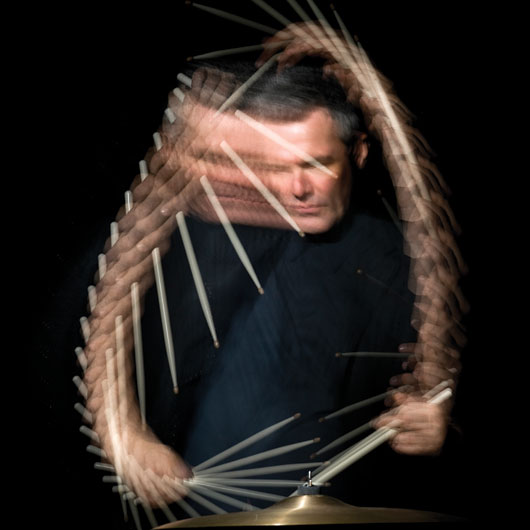Artist Tips: Christian Prommer
Christian Prommer is not one to think within the traditional rubric of what is considered […]

Christian Prommer is not one to think within the traditional rubric of what is considered electronic dance music; after all, the Munich-based percussionist and producer is best-known for his Drum Lesson Vol. 1 release, which reworked classic techno and electronic tracks into jazz instrumentals and sent his profile through the roof. Now in the midst of releasing Drumlesson Zwei (!K7), Prommer is as ecstatic about organic, non-electronic music as his own techno productions, though the inspiration for both is still his grounding in Detroit techno and the European synth workouts that gave rise to so many early techno producers’ ideas. Here, he takes us through the process of how he uses Apple Logic 9 as a recording tool.
Levels
Keep your levels down. No need for hot channels or loud recordings. All the plugs sound better when driven not so hot. I try to keep the channel fader at -10db. I even put the gain plug as the first plug in the insert and put it at -10db. Within 24bit it is not a big deal, but when you add the channels up to 16 or more, you will hear the difference for sure. Better imaging and big low end. And low end is what we want, right? It worked great on the track “Sueno Latino,” which was mixed in the box with Logic.
Sample Replacement
A new feature in Logic 9 is the sample replacement or addition to a drum track. I used this on a few tracks like “Sueno Latino” and “Acid Eiffel.” You get the original unquantized hits of a drum track played by an EXS sample—good when the drummer has the right feel but the kick sound is not strong enough. I always put the velocity on a constant level and put the new sample low under an organic one. I really love the EXS preset kicks for this. Sometimes I layer two or three.
“Acid Eiffel”
Fader Groups
I use fader goups in multi-track recordings to group drum and bass tracks together and give them a general groove treatment. Make a fader group and select your faders, and check the Phase Locked Audio button. Then put the Flex algorhythm on Rhythm and let the program do its math. Then select all the tracks of the group and quantize them with a fixed 16B setting. Lower the Q amount in the extended quantize parameters box to 0%. Start the playback and raise the percentage up to where you change the groove enough to get a locked vibe. Usually, 60% is more than enough. It is a great feature to get long tracks that are out of sync to swing tighter.
Sidechain Compression
An old trick but it still works wonders in a mix, especially when you move the kick that you use to trigger the comp (and that is muted) around an eighth note. I love this feature for all the percussion sounds… congas, shakers, and the like. It provides some room for more radical sound treatment like the distortion, bit-crushing, and filtering of the compressed sounds. I used it a lot on “Groove la Chord” and “Jaguar.”
“Jaguar”
Trust Your Instincts
…and your ears. What looks wrong and bad but sounds inspired and interesting is way better that the other way around. I spent a lot of time getting drums right and fixing stuff to the grid just to go back to the beginning of the recording and fall in love with the “interesting”interpretation of the performance. Sometimes it’s good to remember the art aspect of what we do within all the science and technology.

